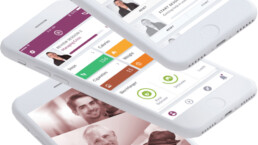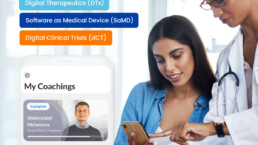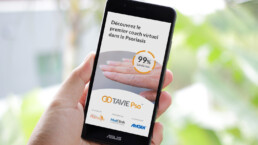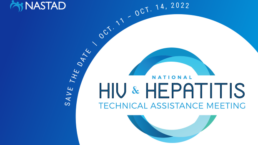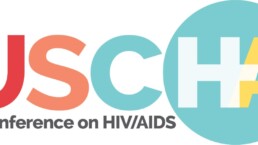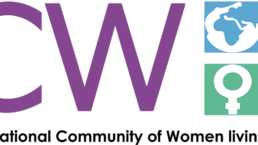Artificial intelligence, automation and the future of nursing
An article featuring TAVIERX was written by Wendy Glauser for Canadian Nurse
Technological change is already shaking up the profession. What is your relationship with technology going to be?
Picture this: a patient walks into the emergency department and sits in front of the “triage nurse” — a computer that uses advanced algorithms to ask questions based on the patient’s answers. A robot draws the patient’s blood. Another one computes real-time nurse schedules and bed availability to decide if the patient can be admitted. “Follow me,” the robot says.
The scenario might sound far-fetched, but next-level computer systems have already transformed industries from manufacturing to finance to retail. And pilot projects across the globe suggest nursing won’t be exempt from the robotic revolution.
Last fall, a robot with artificial intelligence (AI) was introduced in a Toronto retirement home to interact with residents and monitor signs of dementia. Researchers at the Massachusetts Institute of Technology (MIT) are testing robotic decision supports that schedule nursing tasks and assign rooms to patients. Japanese companies are developing carebots that can help patients stand up and even lift and swing them from the bed to the bathroom.
Richard Booth, an assistant professor at the Arthur Labatt Family school of nursing in London, Ont., argues that if nurses don’t start understanding this technology and participating in its development and implementation, the profession and the best interests of patients will suffer.
“If we don’t mediate this technology, someone will do it for us,” says Booth, who began his career in mental health nursing. “We have to plan our own obsolescence to some extent because some predictable nursing work and activities that aren’t extremely complex will be automated.”
He says nurses should be making the decisions around which aspects of their roles can be taken over by technology — and which ones can’t. By overseeing the introduction of AI and automated technology, they can ensure that the more holistic aspects of care continue under the new systems. “We need to give technology nurses’ roles in a deliberate manner to ensure it fits the needs of our patients.” These roles might include elements of information management and manual physical tasks such as portering and delivery of supplies.
More nurse involvement in technological development will benefit nurses as well. According to Booth, those who embrace technology will be more likely to see career advancement. Based on what he has seen in industries that have already undergone intense automation (e.g., food services and manufacturing), he predicts that many nurses will eventually become higher-level delegators. Overseeing patient care and coordinating other workers and technologies to ensure care is delivered appropriately will become the new nursing roles.
José Côté is a professor in the faculty of nursing at the Université de Montréal and holder of the research chair in innovative nursing practices. She has overseen the creation, rollout and evaluation of a virtual nursing platform known as TAVIE (Traitement, assistance virtuelle infirmière et enseignement).
TAVIE uses pre-recorded videos of a nurse to coach patients to manage their health condition and make behaviour changes. Patients are prompted to log in to the system on a laptop. As they answer multiple-choice questions, TAVIE uses an algorithm to decide which of the thousand or so videos to play back.
Evaluations have found that the tailored messaging and the virtual nurses’ empathetic facial expressions hit home with patients — in ways that some established health advice websites are not able to. “Patients feel that the virtual nurse is real,” Côté says.
These web-based tailored interventions have been shown to be promising in improving medication adherence in patients living with HIV. TAVIE en santé is currently being evaluated on how well it supports these patients in improving lifestyle behaviours (physical activity, smoking cessation and healthy eating).
Côté’s technology performs a distinct nursing role, that of empowering patients with strategies that will work within their individual contexts. “We don’t say to the person with HIV, simply, ‘Take your medication, it’s good for that and that,’” she explains. “It’s more about how you can overcome situations where it’s difficult to take medications, like you go out with friends and you take alcohol and dance.”
Among other TAVIE applications that have been developed are interventions for transplant recipients, post-cardiac surgery patients, people with diabetes and patients with gynecologic cancer.
Côté’s perspective on technology is more reassuring than Booth’s; she doesn’t believe technology threatens the nursing role. “People think we have the smartphone and so we can do everything…no!” she laughs. Her research shows virtual nurse interventions don’t tend to be successful unless they’re integrated into traditional care. (Case in point, consider the thousands of health-related apps that are used once or twice, or not downloaded at all.)
Patients are most likely to complete the TAVIE virtual sessions when nurses motivate patients to use the technology at routine appointments and when virtual encouragement builds on real-life advice. TAVIE complements, rather than replaces, the nurse’s care. “It can enable the nurse to bond more with the patient, because now it’s not just the relationship in the hospital — it can be bigger than the hospital.” A future of networked home and hospital systems will mean nurses can obtain feedback from patients more frequently and can offer more timely and targeted advice.
Nurses who become involved in integrating technology into conventional care protocols or in introducing new technology will need to keep in mind social cognitive theory as it is applied to technology adoption. Booth summarizes the theory like this: “If it gives you value and it’s easy to use, you’re probably going to use it.” This means neither nurses nor patients are likely to embrace technology if it doesn’t mimic the simple look and feel of everyday gadgets like smartphones and wearable devices. It is also important that its functionality is perceived to be immediate and clear.
Education is another area in which technology is shaking up the profession. Ryan Chan, an emergency nurse and a master’s student, is working with Booth and his research team as they develop an online computer game to teach electronic medication administration to nursing students. The game will present various scenarios. In one scenario, for a man who has had a heart attack, students will have to complete various checks to ensure that each medication they’re giving is appropriate. If they make an error, such as forgetting to check whether a medication is administered at the right time, the game will alert them and provide immediate feedback.
Chan explains that students already practise on an electronic system, but it’s housed in the school and students are exposed to it during assigned course time only. The game will provide the opportunity to learn anywhere and at any time they prefer.
One of its features is a sequential, staged progression system that he hopes will motivate students to participate. They will be able to advance to more comprehensive scenarios only if they’re successful with the simpler ones.
“The current generation of students uses technology in many aspects of their life,” Chan says. “We’re hoping that adding these gaming elements to the educational context will increase their motivation for learning within a technology-enabled environment.”
Booth thinks embedding cutting-edge technology in nursing education — “bringing education from 1.0 to 2.0” — is key. But preparing the next generation is also about making them think about technology on an abstract level. Nurses should be asking themselves outside-the-box questions: “What will this task I’m doing look like 20 years from now?” Forward thinking is essential. “Our notion of nursing for the last 150 years has been that it is about face-to-face care delivery. That notion needs to change today.”
For additional information on the platform, please Contact us at info@360medlink.com
Share it on
Other articles
June 1, 2023
Pioneering Partnership to Revolutionize Clinical Trials: 360Medlink and Rubix LS Join Forces
Press Release Montreal, Paris, New York. 360Medlink, a trailblazer in digital health platforms, and Rubix LS, a pioneer in clinical trial data intelligence and research, today announced a…
October 29, 2022
Révolutionnant la prise en charge du rhumatisme psoriasique : TAVIEpso lance un nouveau module
Nous sommes fiers d’annoncer le lancement d’un nouveau module par TAVIEpso dans le domaine du rhumatisme psoriasique. Chez 360MedLink, nous nous engageons à fournir des…
October 11, 2022
Revolutionizing HIV Care: NASTAD Report Evaluates our TAVIE Red Program with Impressive Results
We are excited to share the groundbreaking findings of the NASTAD evaluation report on the TAVIE Red Program. This comprehensive evaluation highlights the remarkable impact of our…
October 8, 2022
360Medlink Participation in USCHA2022 Conference in Puerto Rico
We are thrilled to share that 360Medlink recently attended the USCHA2022 conference held in Puerto Rico. This highly anticipated event featured over 120 institutes, workshops, and posters,…
September 20, 2022
360Medlink Joins Forces with ICWNA to Support Women Living with HIV
We are pleased to announce our collaboration with ICWNA (International Women Community) in their mission to empower and assist women living with HIV. As a firm believer in the power of…
May 13, 2022
Our Cutting-Edge Medical Device Software (MDD) Nominated for Galien Award in Medtech Category
We are delighted to announce that 360MedLink’s cutting-edge medical device software (MDD) has been nominated for the prestigious Galien Award in the Medtech category. This nomination…


